If you’re a fan of the South African and Mozambique native Jade plant, you may be surprised to find out that there are several types of Jade plants. These beautiful and easy-to-care-for plants are a popular choice amongst households worldwide since they’re so easy to manage.
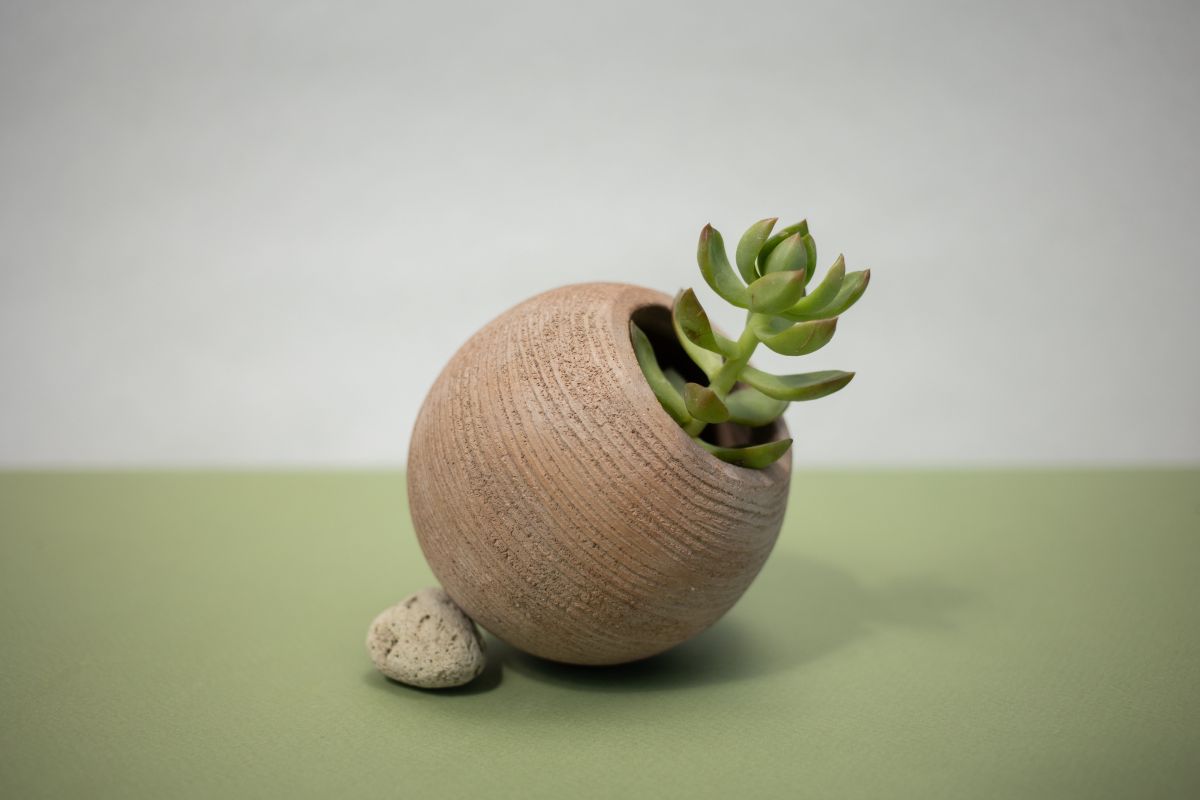
If you’ve never heard of the Jade plant before, it may be because it also has different names that you might be more familiar with: the money tree, the money plant, and the lucky plant.
No matter what name you know them by, these succulent plants are hardy and can last a long time. With so many types of Jade plants out there, it can be hard to differentiate between them.
Plus, if you’re new to the plant world and want to get your very first Jade plant, you might be wondering what type you should get and how to care for them. We’ll discuss all these questions and more in our Jade plant guide.
How to Identify Different Types of Jade Plants
There are over 200 different types of Jade plants known to mankind worldwide. However, unless you know what to look for, it can be hard to identify them from one another.
It’s also common to mistake these succulents for other types of succulents. So it is helpful to follow some steps to take to identify the different types of Jade plants.
Identification Steps for Types of Jade Plants
Step 1. Check the stem
The stem is thick and woody, often giving a miniature tree-like appearance. Like most succulents, the stem is fleshed out and can be as thick as 4-inches.
Step 2. Observe the leaves
The leaves of the Jade plant have a unique shape to them – they’re shaped like a teardrop. They can be ovate or wedged, can grow up to 3-inches in length, and can be either glossy or waxy in texture.
Step 3. Look at the flowers of the different types of Jade plants
Jade plants are also known to flower if taken care of properly and placed in the right conditions. Jade plants prefer to bloom under dry weather and usually grow pink and white flowers that are shaped like stars.
With that said, depending on the type of Jade plant you purchase, you may notice other unique attributes, too. For example, the Crassula Arborescens, also known as the Silver Jade Plant, is known for its grayish-silver leaves.
The Crassula Arborescens Blue Bird Variegata, on the other hand, has a color of blue, cream, green, and red that make up its leaves.
The Crassula Capitella Campfire Jade plant is shaped to look like an airplane propeller and comes in colors like bright red or light green. It produces white flowers in the summertime.
There are many various types of Jade plants out there, as noted before, but as long as you know what you’re looking for in general, you should be able to identify them easily.
How to Care for Types of Jade Plants
Caring for Jade plants is quite simple. As we’ve already mentioned, these succulent plants are hardy and long-living, so keeping them alive is generally very easy to do.
These plants need little water through the summer and an even smaller amount during the winter months. With that said, these plants are prone to being overwatered because of how little water they require.
Let’s take a more in-depth look at the steps required for Jade plants to survive.
Light
When it comes to light, Jade plants should receive anywhere from four to six hours of sunlight per day. For the best results, these hours should be done in the morning and through an easy or south-facing window.
Avoid placing them in direct contact with the afternoon’s sun as it can be too potent. However, keep in mind that the growth of these plants relies on sunlight, and depriving them of their morning sunbathing can stunt their growth.
Watering
As mentioned previously, the Jade plant does not require a lot of water. In fact, it doesn’t require much water at all and therefore is prone to being overwatered.
To avoid this happening, ensure that the top 1-2 inches of soil dries out between each scheduled watering. Most of the time this will translate to watering them once every two or three weeks, but you should still check regularly to be sure.
When it’s time to water a Jade plant, give them a good soak but don’t overdo it. Jade plants do not like being in moist soil constantly, so allowing the soil to dry out on occasion will keep your plant healthy and happy.
Soil
There are a lot of different types of soil on the market for various types of plants. It can be overwhelming to figure out which type of soil to purchase.
For a Jade plant, the only requirement is that the soil needs to be one that drains quickly to prevent it from overwatering.
However, since Jade plants can become top-heavy and their roots, which are shallow, can cause them to tip over, it’s recommended that a slightly heavier soil be used – typically one that has a decent supply of organic matter.
While Jade plants can thrive in soils that are acidic or have traces of alkaline, these plants can also become deficient in nutrients if left in soil that has too low or too high pH levels.
With that in mind, potting soil mix that has been designed to use for other succulents can be used for your Jade plant but it may require some organic matter to be added.
Temperature
Typically, Jade plants are best kept in temperatures that range from 65 and 75 ° Fahrenheit through the daytime hours and anywhere from 50 and 55 ° Fahrenheit through the nighttime hours.
Depending on where you live, the winter months can pose some issues for your Jade plant, so it’s important that you take the appropriate steps to protect them from drafts and to keep their foliage from touching windowpanes.
Humidity
Lower humidity is generally preferred by Jade plants, who need their soil to dry out between waterings. While it can certainly thrive in the average humidity of a home, it’s best (and recommended) to place the plant in a room with a range of 30% to 50% humidity.
Fertilizer
Much like with water, Jade plants do not require much fertilizer and will do well with houseplant fertilizers that come in spikes, slow-release pellets, ready-to-use pumps, or that are water-soluble.
Since Jade plants are slow to grow, they don’t need regular fertilizing. Instead, they can be fertilized once every six months throughout the warmer months, but should not be fertilized during winter.
20 Different Types of Jade Plants
Since there are a variety of types of Jade plants, it’s important that you find and choose one that best fits you and your home’s aesthetics. Let’s look over some of the more popular Jade plants.
1. Gollum Jade
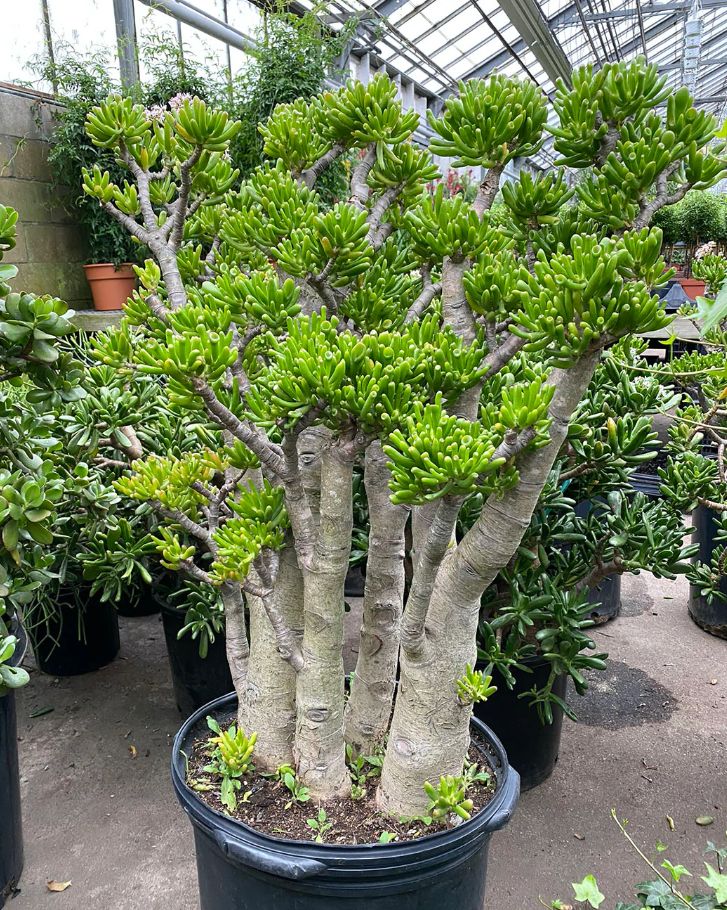
Crassula Ovata ‘Gollum’
The Gollum Jade is a Jade plant that is often referred to as a money plant. This small and shrubby plant can grow to be three feet tall and two inches wide.
It has green leaves that are shaped similar to fingers and red circles on the tips. During the late fall months and into early winter, this succulent can produce small star-shaped flowers that are pinkish-white in color.
2. Habor Lights
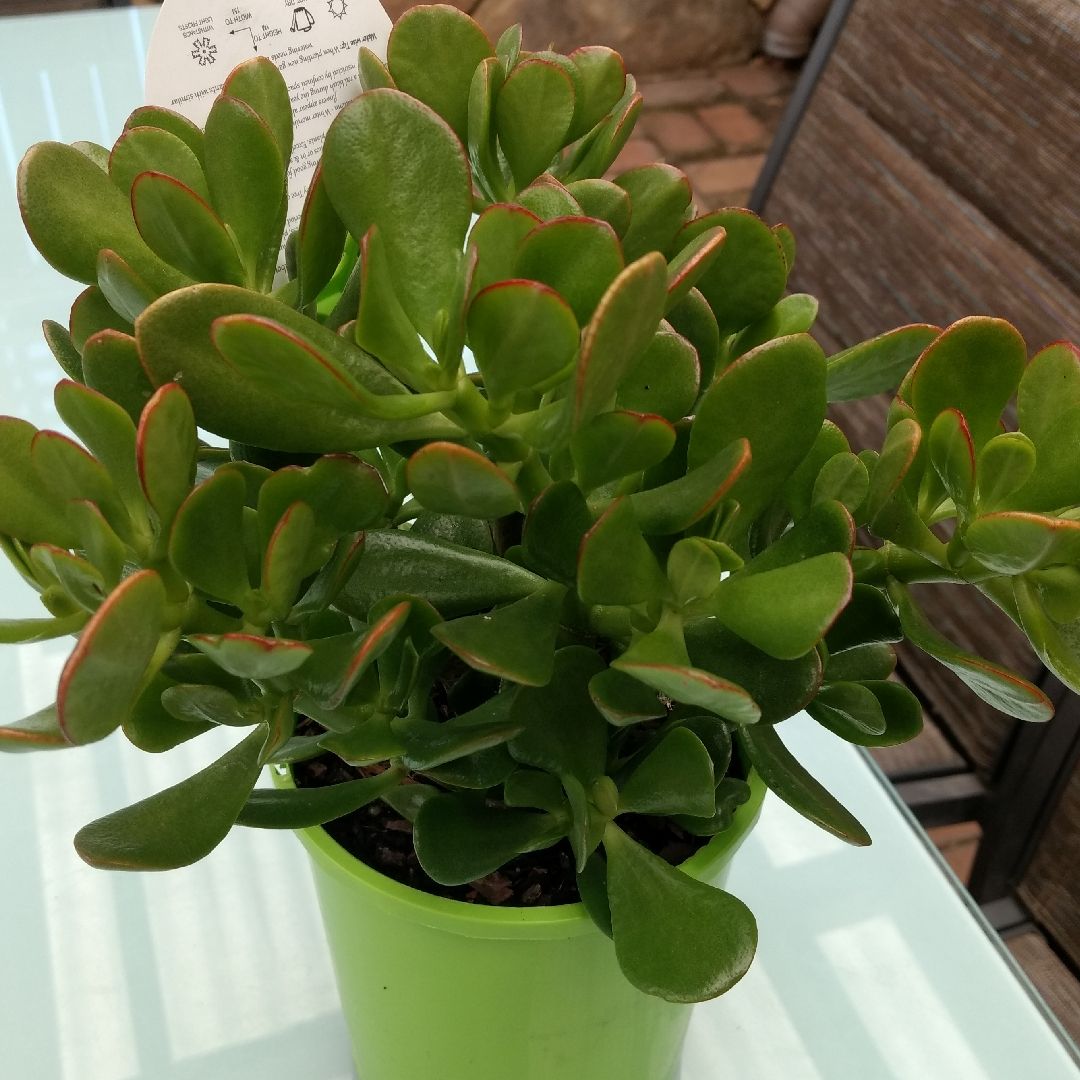
Crassula Ovata ‘Harbor Lights’
Habor Lights is the name of a Jade plant that has smaller leaves than most of the Jade plants on this list. The leaves become primarily red during the colder months. But during the late fall and early winter months, tiny pinkish-white flowers bloom.
3. Golden Jade
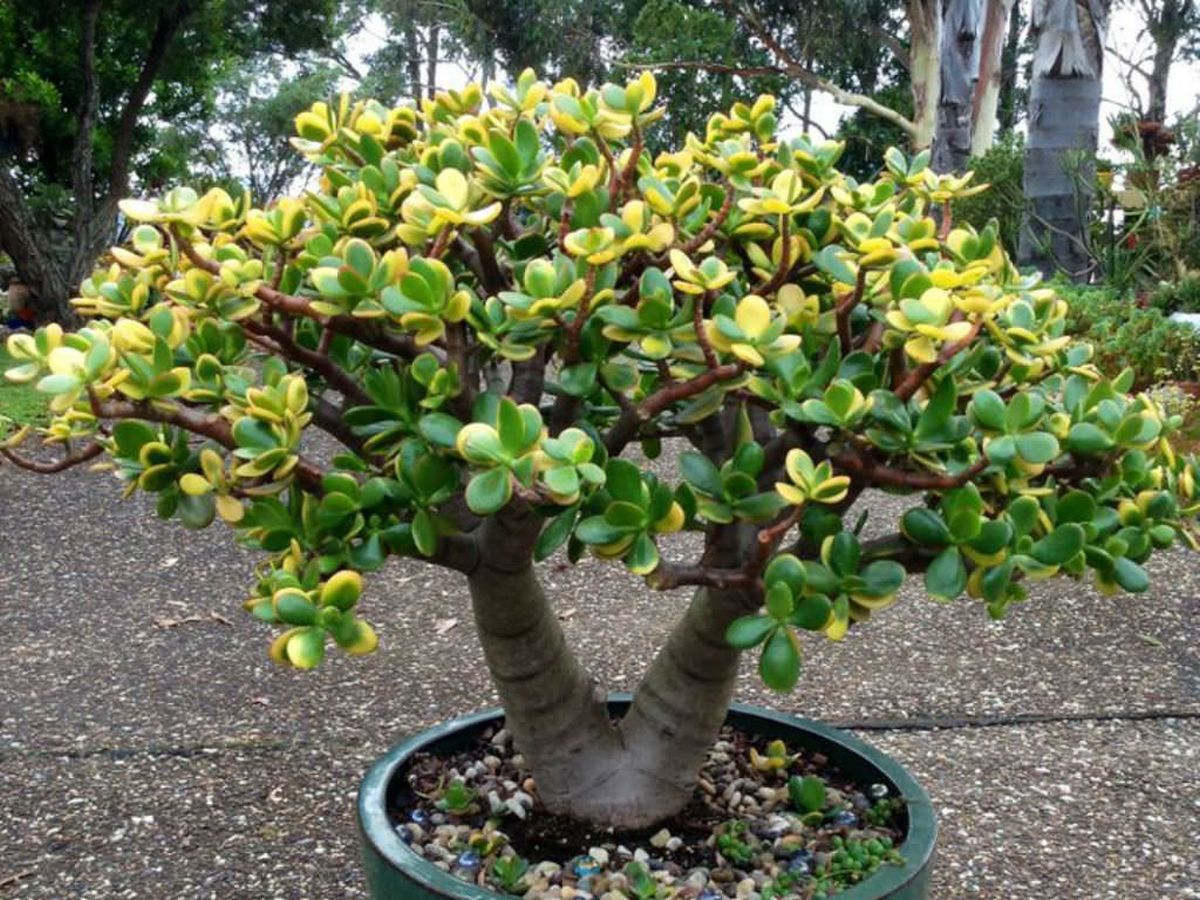
Crassula Ovata ‘Hummel’s Sunset’
This evergreen succulent produces rounded leaves that are glossy, green, and fleshy, and are complemented by yellow tips and red edges. During the colder months, the yellow tips become even more prominent and lovely.
Unlike the pinkish-white flowers that the two succulents above produce, this Jade plant produces starry white flowers, often in a group. Due to its showy visuals, it makes the perfect accessory for outdoor gardens.
4. Miniature Jade
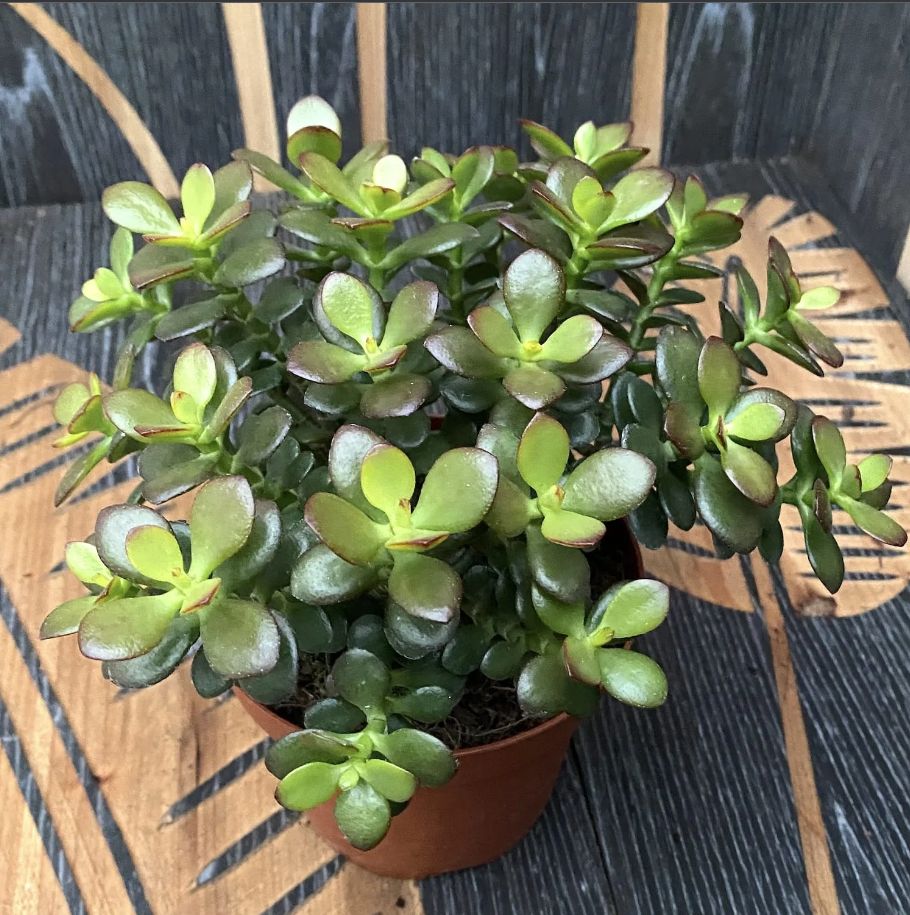
Crassula Ovata ‘Minima’
This miniature Jade plant is considered a dwarf succulent because it grows only up to 2.5 feet tall and 20 inches wide. It has a thick trunk and thick branches that produce fleshy, rounded, and glossy green leaves with red edges.
The flowers it produces are tiny and shaped like stars and are coral-pink in color.
5. Pink Jade

Crassula Ovata ‘Pink Beauty’
The Pink Jade plant is named due to its primarily pink-colored flowers. When dry conditions occur, this plant grows a red blush.
Like similar Jade plants, this Jade plant produces flowers in the late fall and early winter months that produce small pink flowers.
6. Little Jade Tree
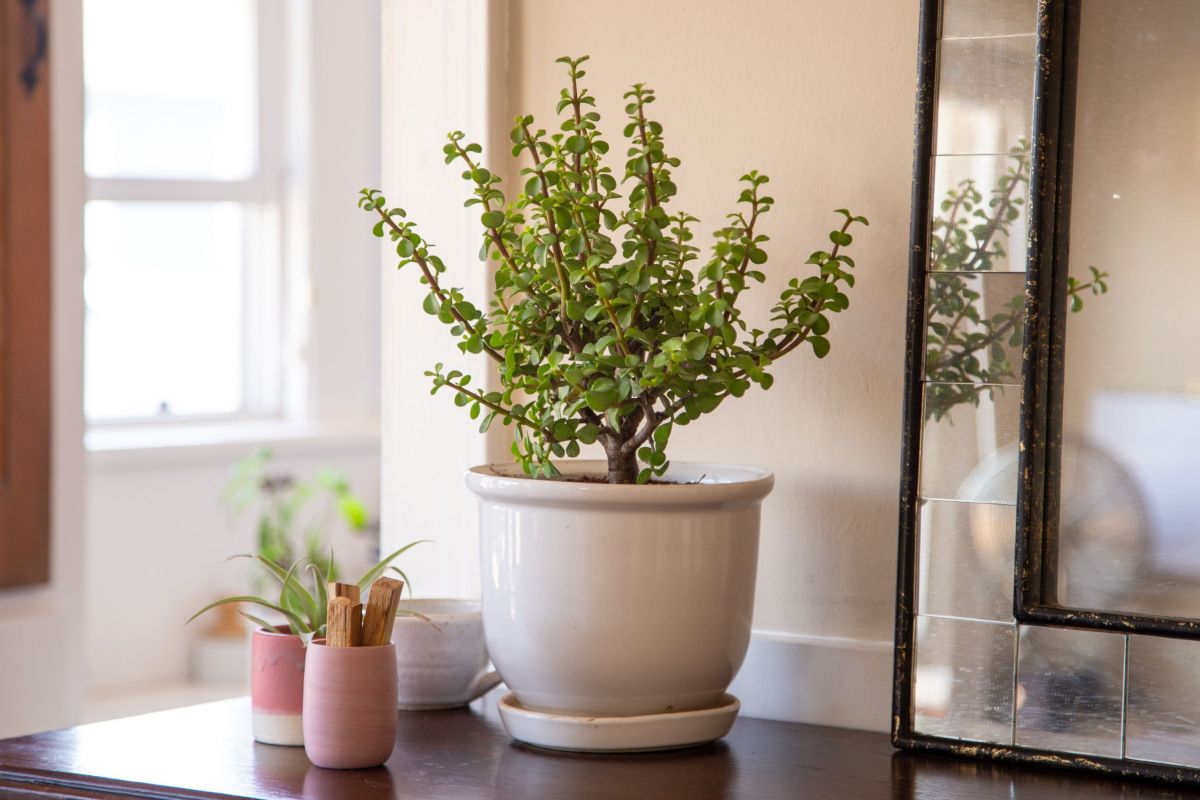
Crassula Ovata ‘Little Jade Tree’
The Little Jade Tree is named so because of its compact, tree-like qualities. It can grow anywhere from 12 to 16 inches and sprouts leaves that are shaped like ovals and are outlined with red edges that are sure to captivate its audience.
7. Calico Kitten
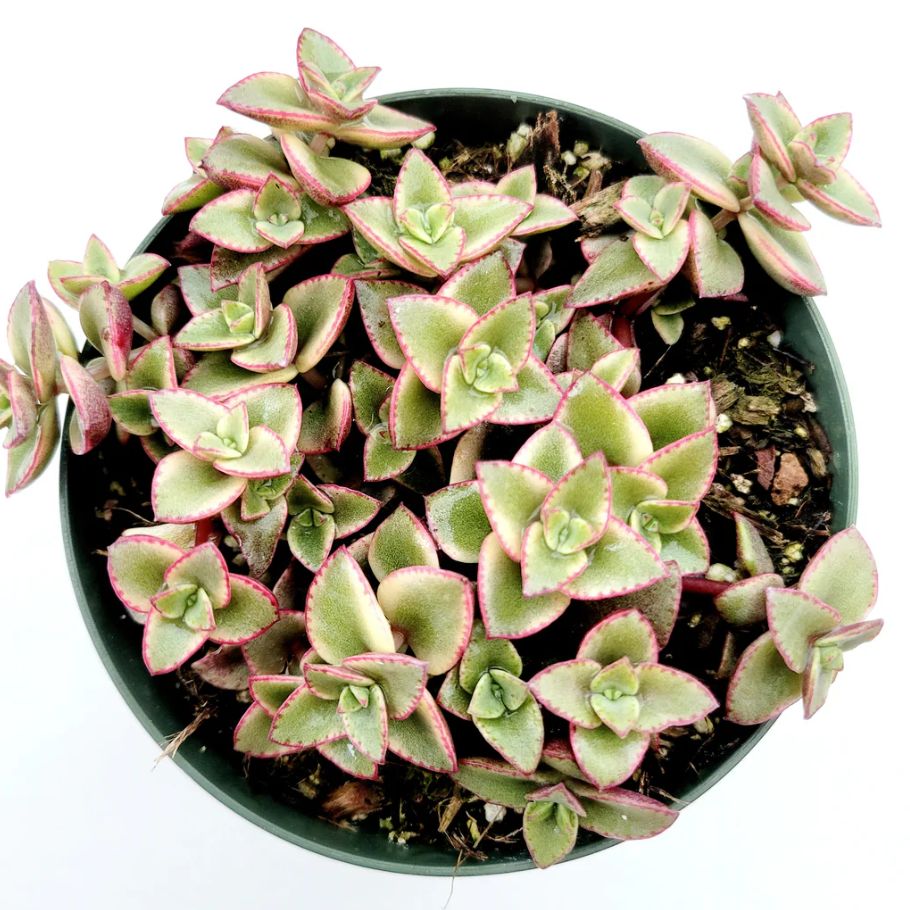
Crassula Marginata ‘Variegata’
This beautiful and unique Jade plant is one that will steal the attention of a room. Its leaves are shaped like hearts and are usually greyish green with pink and yellow edges. It also produces white flowers from the leaves.
8. Campfire

Crassula Capitella ‘Campfire’
The Campfire Jade plant is a succulent plant that received its name from the bright red leaves it has when it reaches maturity. It has leaves that are shaped like propellers and are fleshy.
Although it starts out with light green foliage, the foliage becomes bright red when matured. When the plant reaches maturity, it can reach six inches tall and two to three feet wide.
During summertime, you can expect it to grow white flowers.
9. Crassula Moon Glow
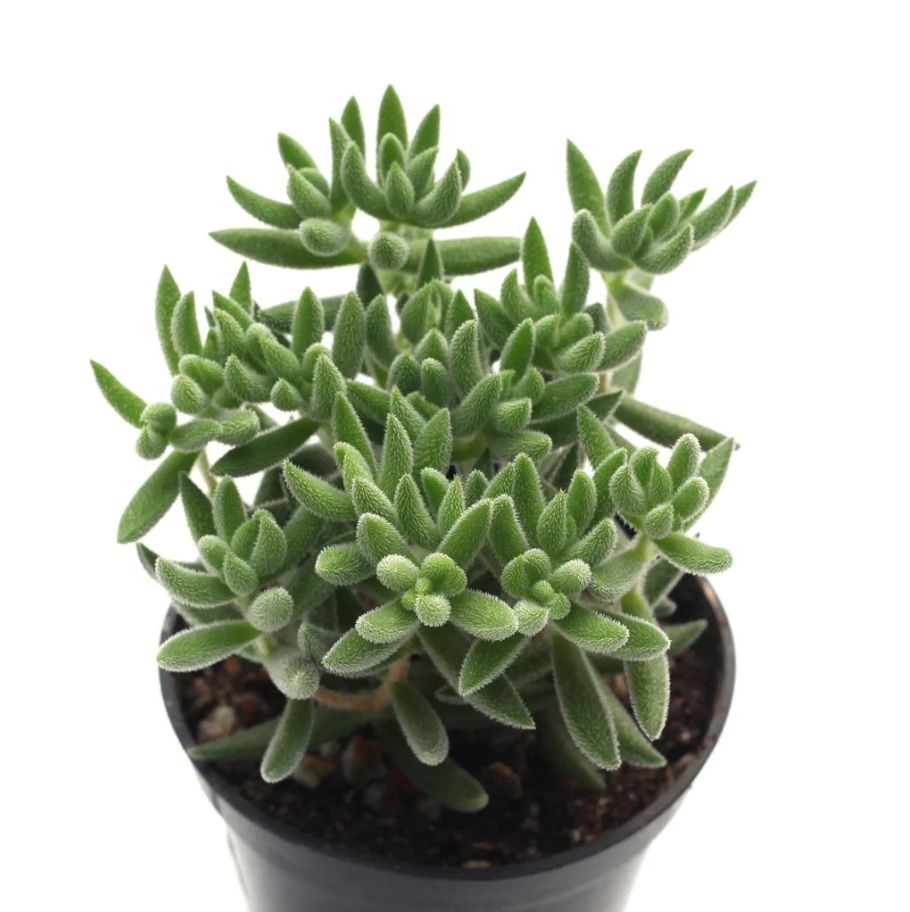
Crassula Mesembryanthemoides
Sporting grey-green leaves that produce white fuzz, this succulent often appears as though it’s covered in frost due to the shine that the white fuzz produces. It’s a thick plant that forms upward into a stack, creating columns around the stems.
10. Baby’s Necklace
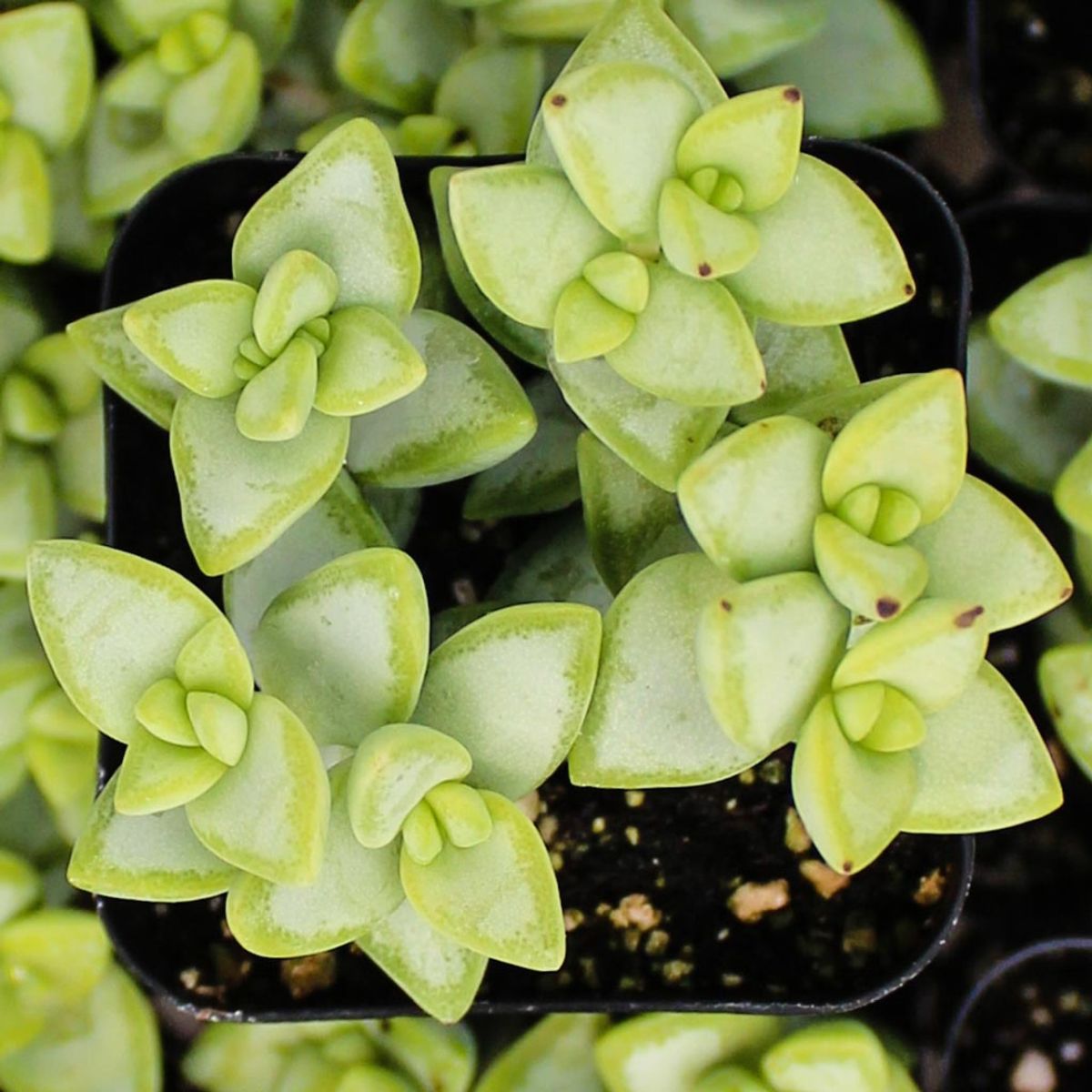
Crassula Rupestris
This Jade succulent plant is an adorable succulent – with a name like a baby’s necklace, you shouldn’t be surprised. The leaves on this plant are chubby and bulbous and form into what look like entangled beads.
At maturity, this plant reaches around 12 inches and blooms white flowers in the spring months.
11. Ripple Jade Plant
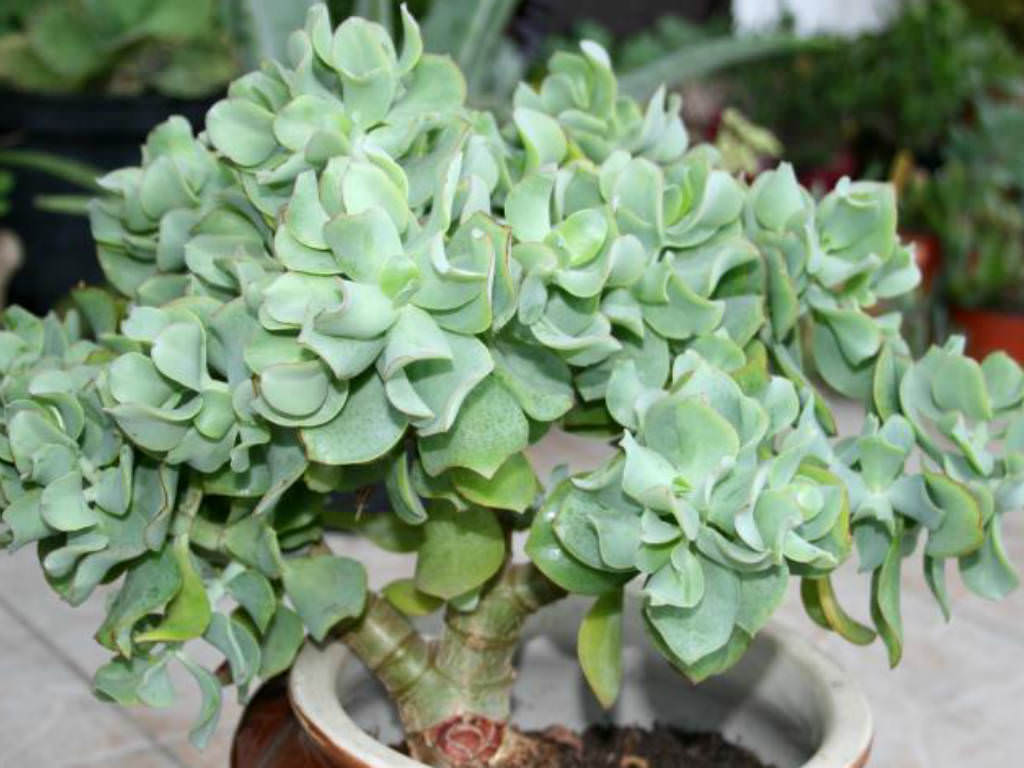
Crassula Arborescens Undulatifolia
Commonly referred to as the curly Jade plant, this succulent has rippled and twisted leaves that are blue-green in color and have a fleshy texture. These plants can mature to four feet tall and blooms star-shaped and pink flowers.
12. Bonsai Jade Tree
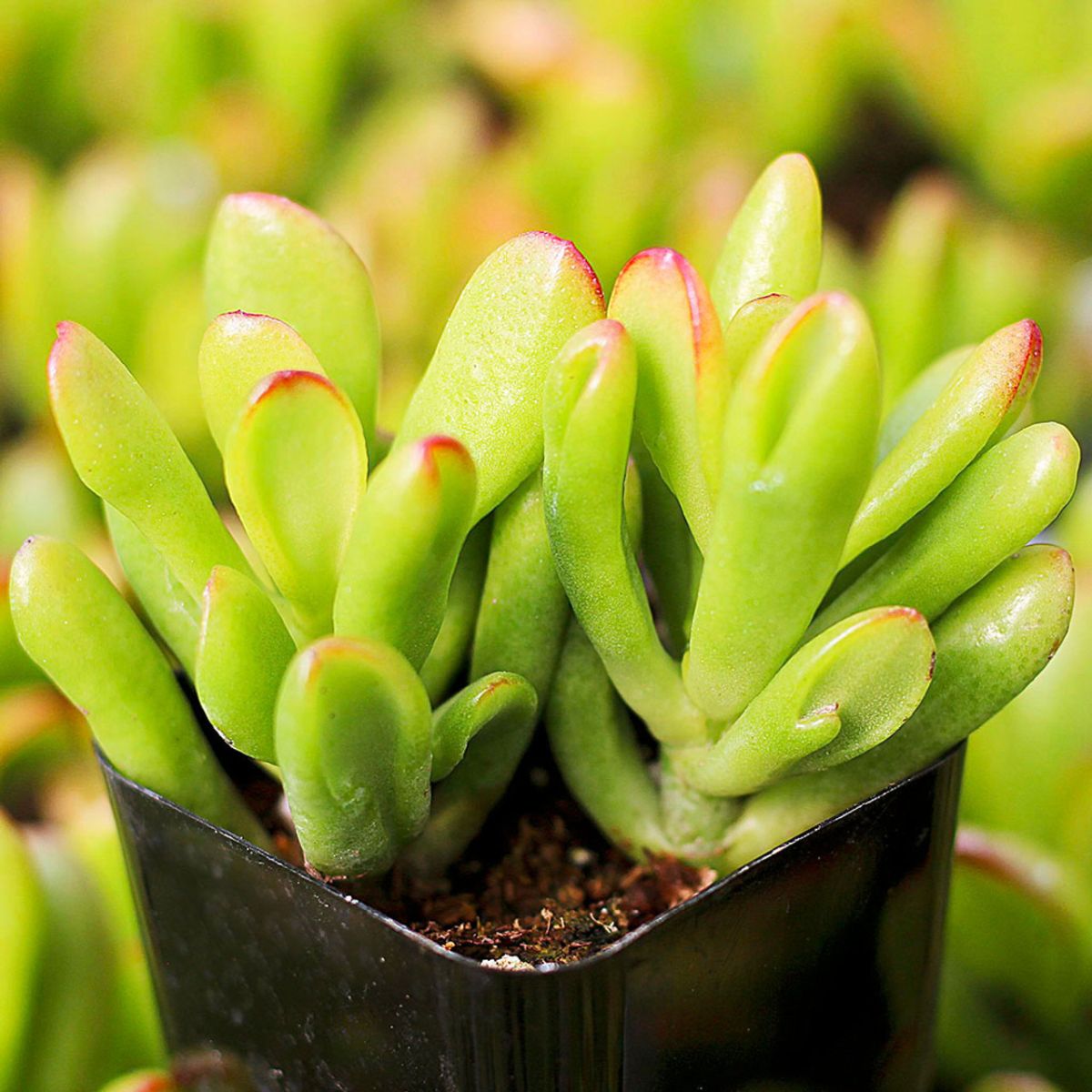
Crassula Ovata Hobbit
The Bonsai Jade Tree, or the Crassula Ovata Hobbit, received its name from the fictional book, Lord of the Rings, written by J.R.R. Tolkien.
The reason for the naming of this plant is because it grows to be only 30 centimeters, or 11 inches, in height. It sports green, fleshy leaves and sprouts beautiful pinkish-white flowers during the early winter months.
13. The Chinese Jade Plant
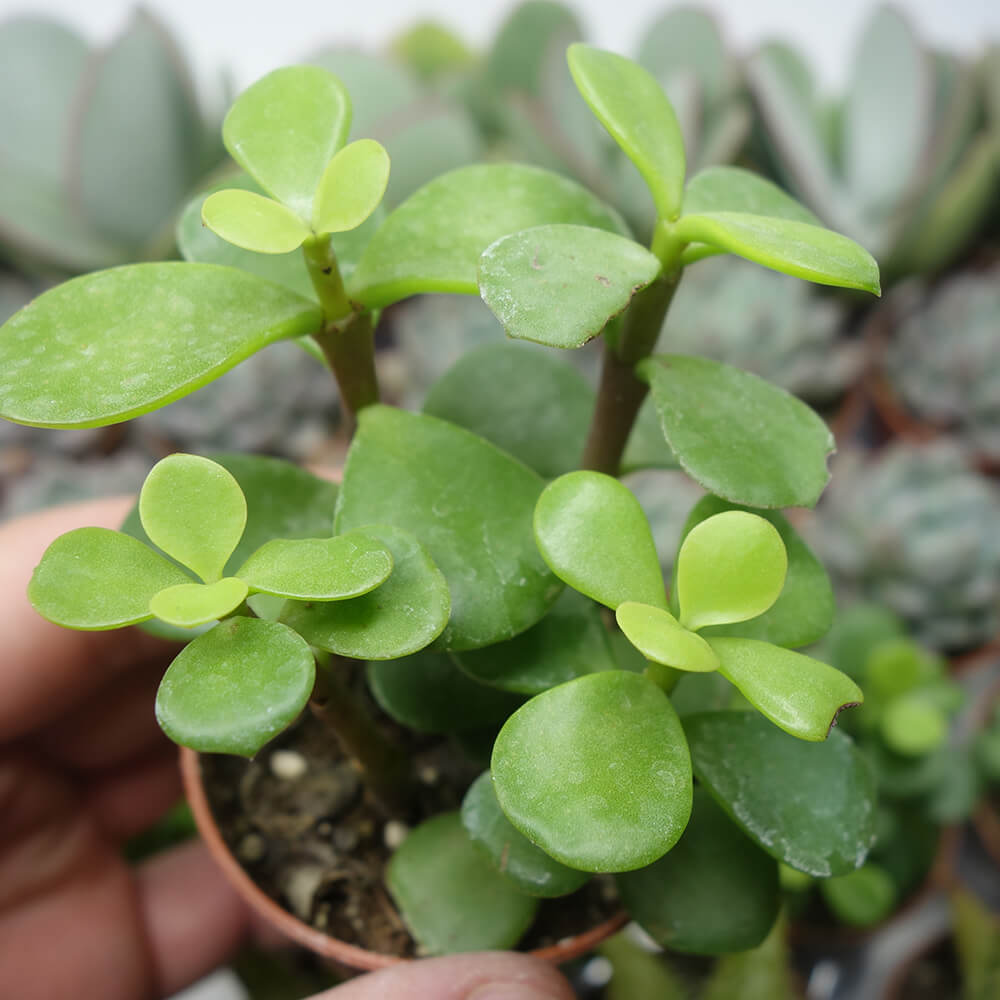
Portulacaria Afra
The Chinese Jade plant, also sometimes referred to as the Pork Bush, is a popular type of Jade plant that is used for decoration, primarily outdoors.
Because it can grow to be huge and reach up to 6 feet tall, it often requires trimming and shaping to maintain a good look. This plant, unlike other Jade plants, does not produce flowers.
14. Lady Fingers Jade

Crassula Ovata ‘Skinny Fingers’
This Jade plant bares a resemblance to the Gollum and Hobbit plants. However, what makes this plant different is the leaves that it sprouts: long and narrow leaves shaped much like fingers, which is where its name derives from.
15. Hummel’s Sunset
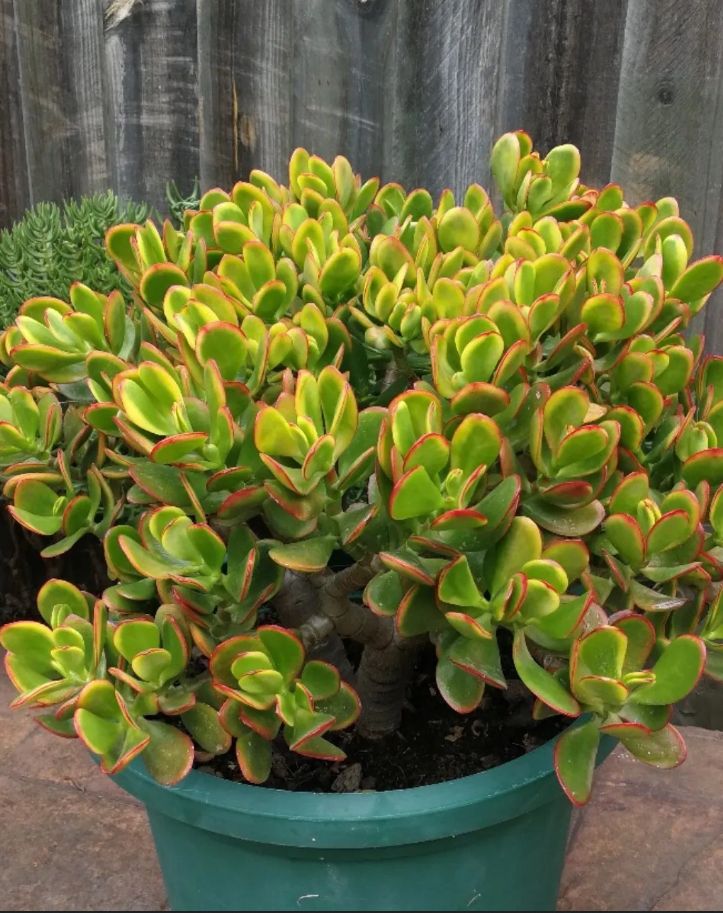
Crassula Ovata ‘Hummel’s Sunset’
This plant has a beautiful foliage color which it is named after. During the colder months, its leaves transition from green to gold and red, giving it the colors of a sunset.
16. Fairy Crassula
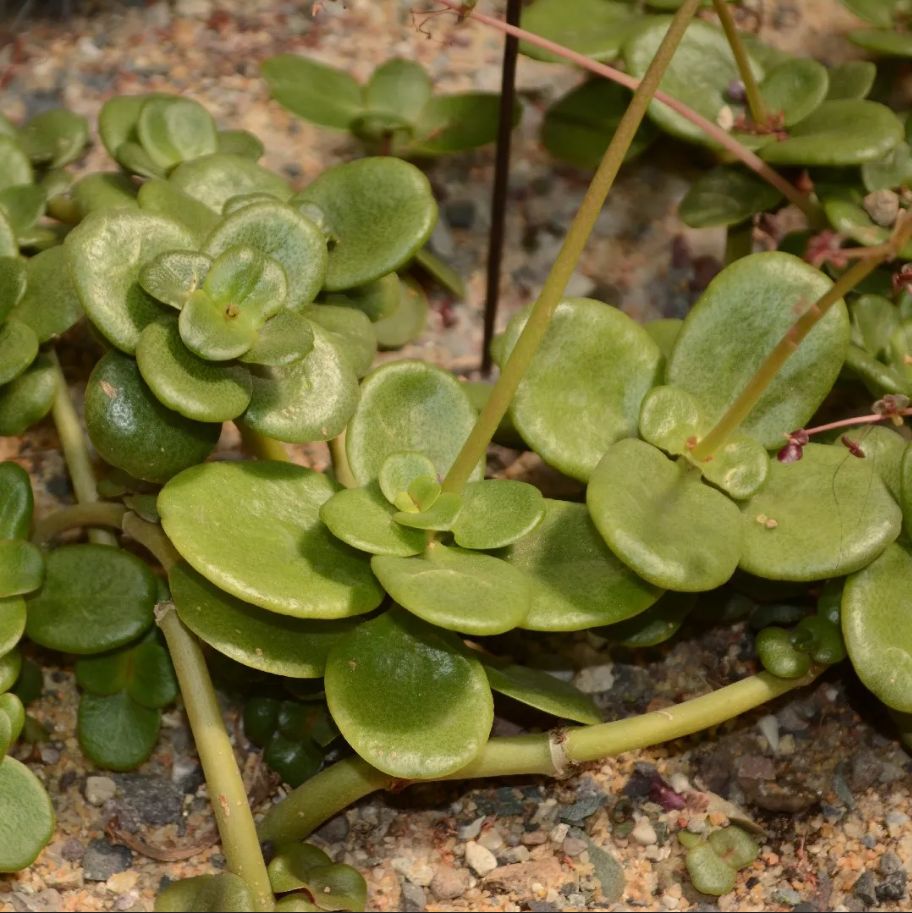
Crassula Multicava
A popular choice for outdoor gardening, the Fairy Crassula plant sports green leaves that are similar in shape to spoons with red edges.
What makes this plant a popular outdoor choice is the fact that when it’s planted in groups, it can make a beautiful, uniform look.
17. Crosby’s Red
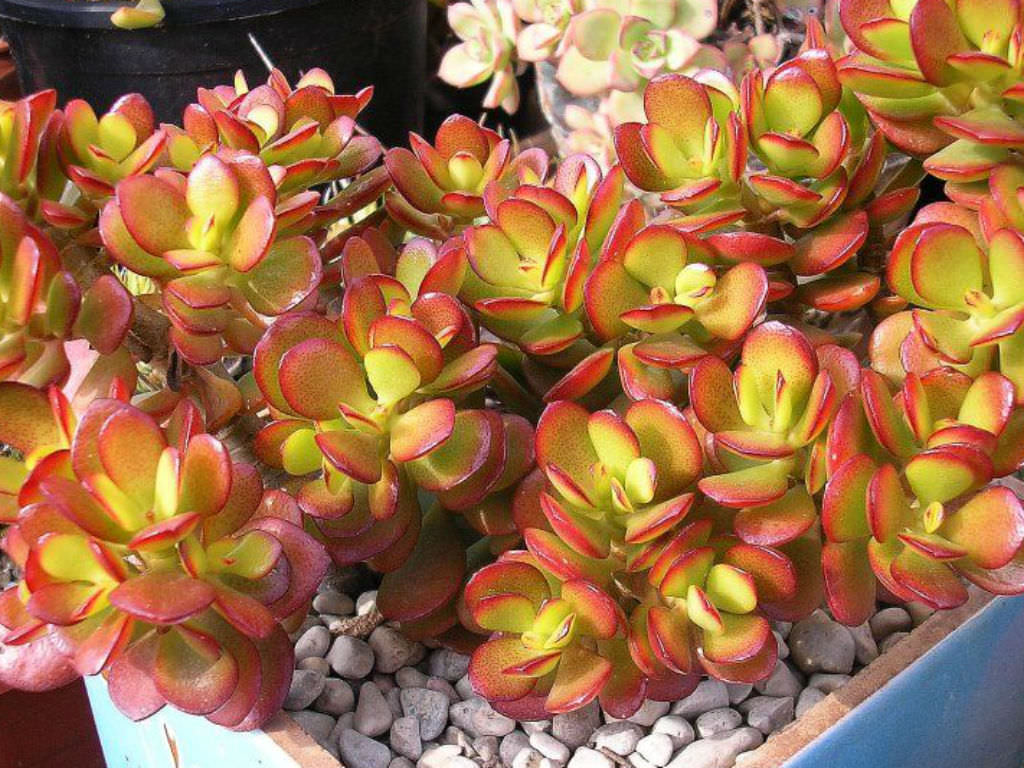
Crassula Ovata ‘Crosby’s Red’
This Jade plant is compact and small, making it the perfect addition to smaller homes and rooms, or even small gardens. If left in the sun, its green leaves will transition to a beautiful, deep red.
18. Yellow Rainbow Bush
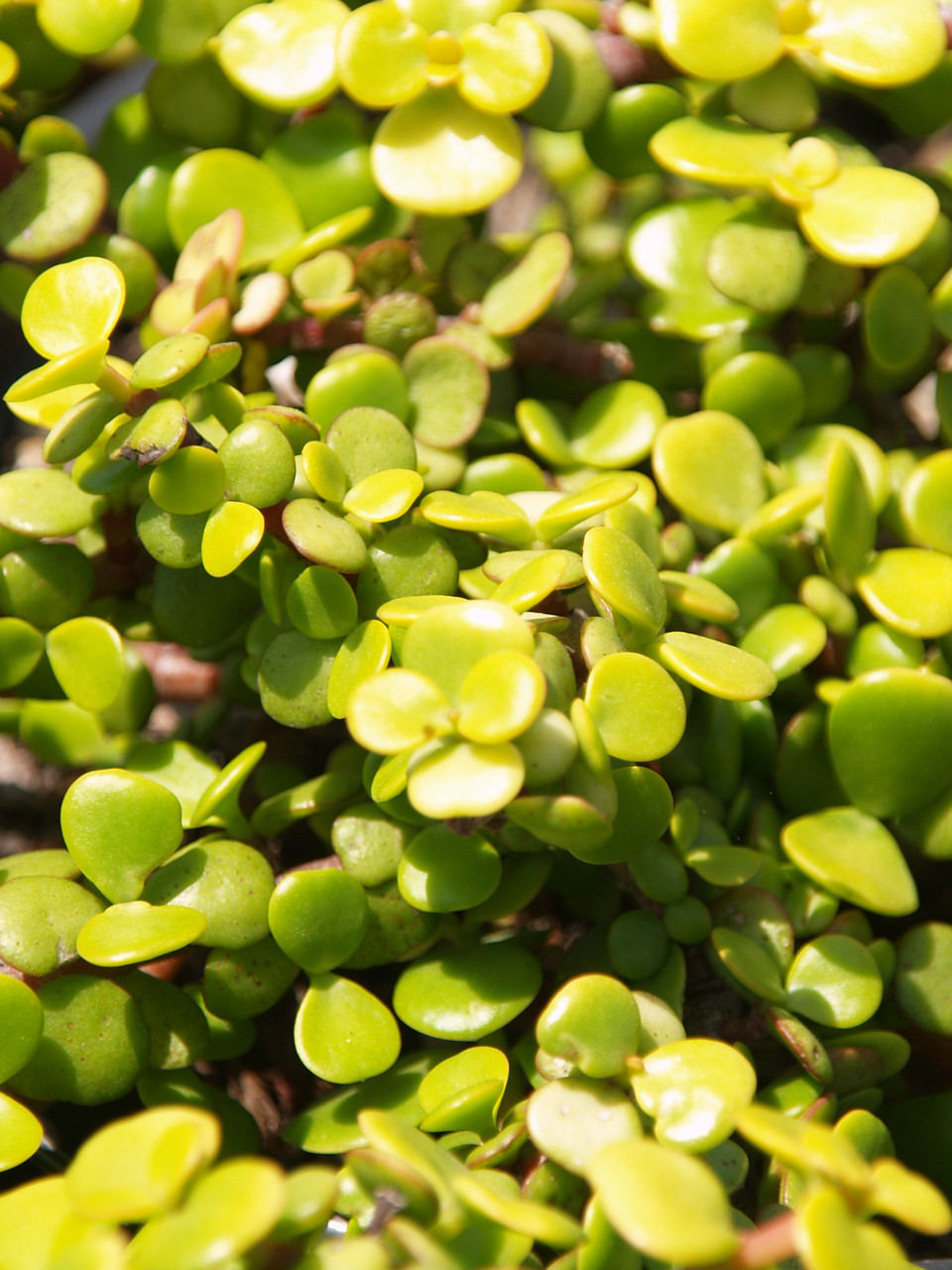
Portulacaria Afra ‘Aurea’
Starting out as a groundcover plant, this Jade plant slowly grows into a sprawling succulent shrub. Its stems curl upward as it matures, and it develops beautiful reddish-brown stems with leaves that are yellow and light green.
This plant is perfect for bonsai plants and for plants that hang from baskets.
19. Tiger Jade
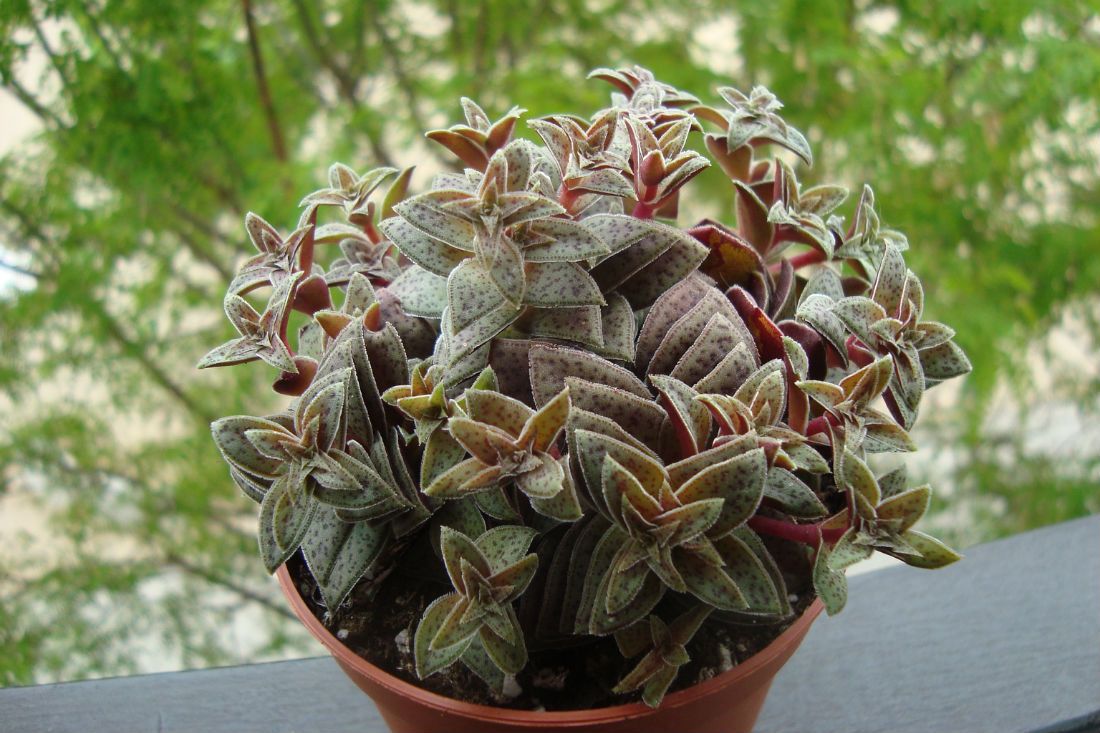
Crassula Exilis ssp. Picturata
This Jade plant is a rare one. It is compact and does not grow to be large. Its foliage consists of dark green leaves adorned with black spots and purple undersides.
When stressed, these leaves can become red. During the early summer months, the Tiger Jade produces flowers that are pale pink and white.
20. Jade Plant
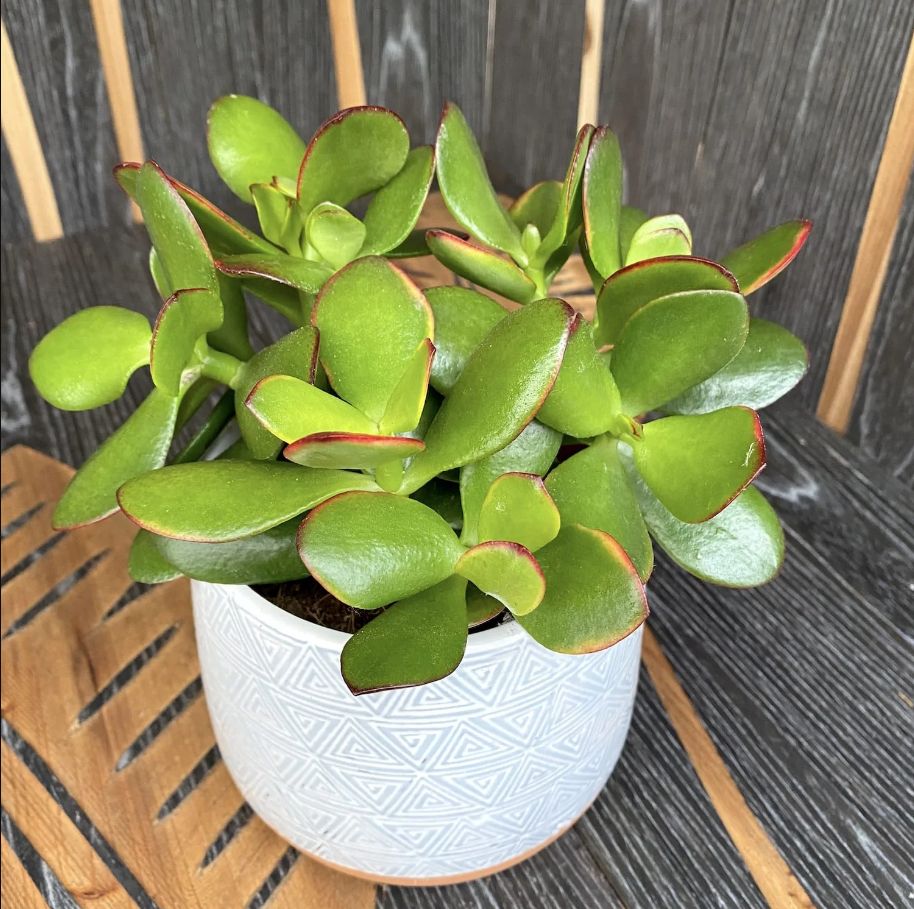
Crassula Ovata
Finally, the original Jade plant, known simply as Jade Plant, or Crassula Ovata. It is the most common Jade plant you will find and is quite popular, too.
It sports thick leaves that are shaped like ovals and are dark green in color. As it matures, these leaves grow upward and expand out. During the winter months, it develops pink-white flowers on its leaves.
Types of Jade Plants FAQ
Which types of Jade plants are lucky?
All types of Jade plants are considered to bring luck and prosperity.
How long do types of Jade plants live?
If taken care of properly, Jade plants can live anywhere from 50 to 70 years old. Sometimes they can live even longer than this, though, and are commonly passed down from generation to generation.
Why is my Jade plant turning red?
There are a few causes as to why your Jade plant is turning red. These causes include extreme heat or cold temperatures, too much sunlight, or a lack of water or nutrients.
However, there are some types of Jade plants that have naturally red leaves, so it’s best to figure out what type of Jade plant you have so that you can tell whether the red leaves are normal or not.
Types of Jade Plants Conclusion
As you can see, there are many types of Jade plants out there and all of them are unique and beautiful. No matter what type you choose to get, you’ll have the benefit of a plant that is easy to care for and one that will last you a lifetime if taken care of properly.
Plus, who knows, maybe your new Jade plant will bring you some luck or financial success. That is, after all, why they are often referred to as the money tree or lucky plant.
